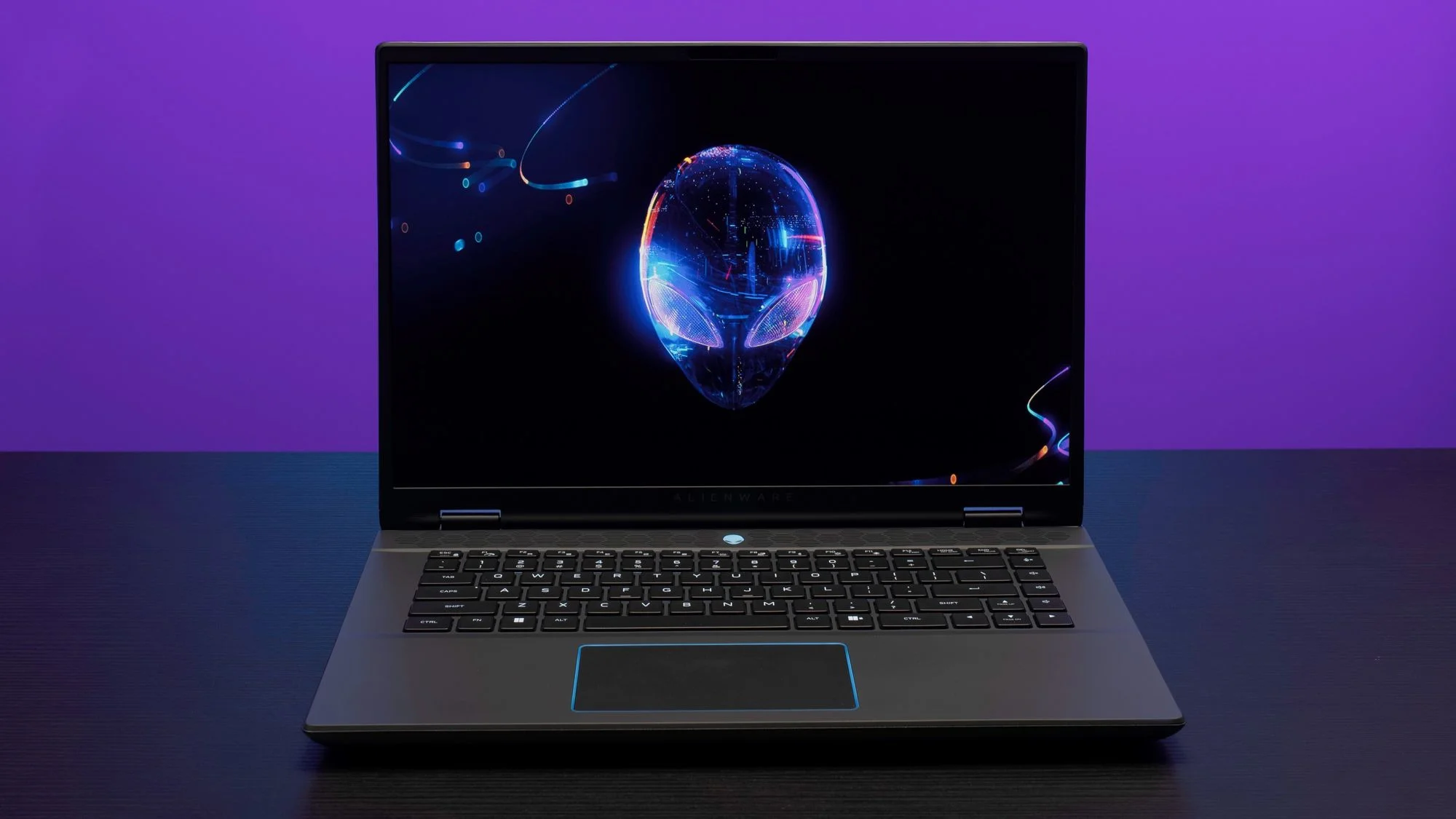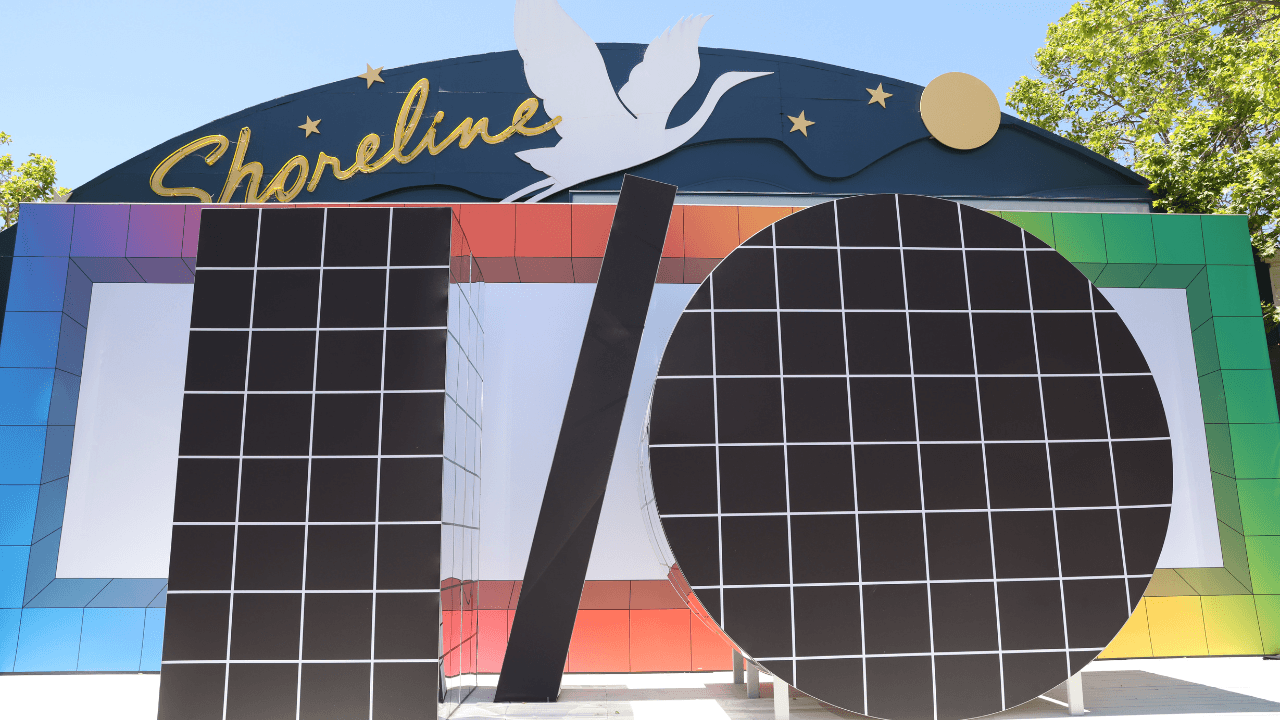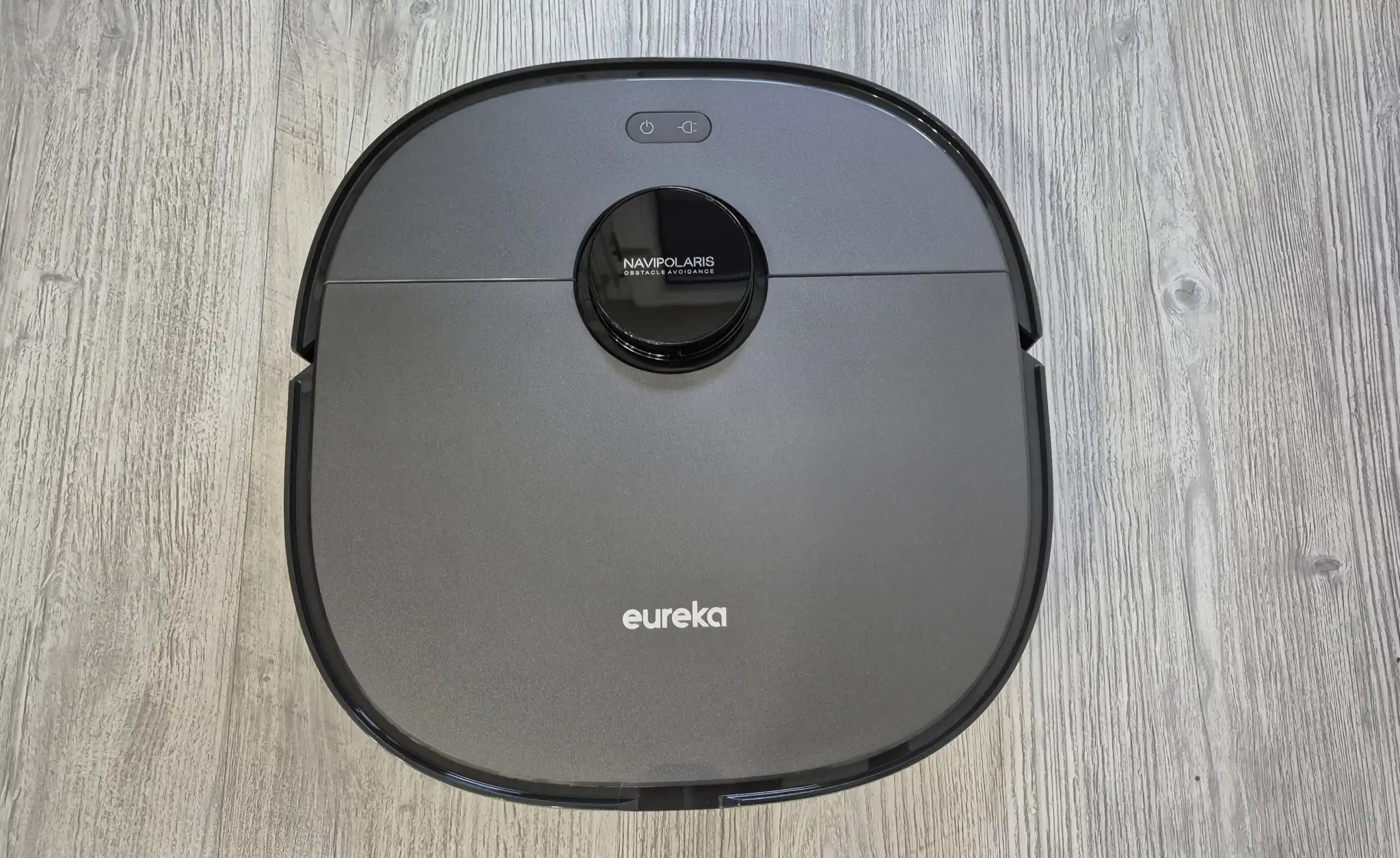Dell has stepped up its keyboard game in a big way with great switches and a cool design, but lackluster software and a high price keep it from an easy win.
I’ve reviewed dozens and dozens of keyboards over many years, and yet I don’t think I’ve ever seen the market as competitive as it is at the moment. And if there’s one segment that’s particularly hot, it’s this very specific one: 75% mechanical boards, aimed at gamers, with a soupçon of features from high-end custom boards thrown in. It’s so hot that even Dell, by way of its gaming sub-brand Alienware, wants in on this action.
The Alienware Pro Wireless Keyboard is a serious contender in this admittedly hyper-specific category. It has a lot going for it, including a compact and stylish body, dual-function wireless, excellent switches, and solid typing. Unfortunately its good hardware is let down by half-baked software, a tune we’ve all heard before, and the high price may dissuade otherwise excited buyers.
Alienware Pro Wireless Keyboard design
Alienware-branded keyboards are nothing new, but compared to the sub-brand’s elaborate desktops and laptops, they have felt like an afterthought. Like their Dell cousins, they were merely the stuff you got with a new computer purchase, nothing to be sought out on their own. Even expensive models like the Tri-Mode Wireless Gaming Keyboard offered little that wasn’t already found elsewhere in the market in a better package.
The Pro Wireless Keyboard has a lot going for it, including a compact and stylish body, dual-function wireless, and excellent switches.
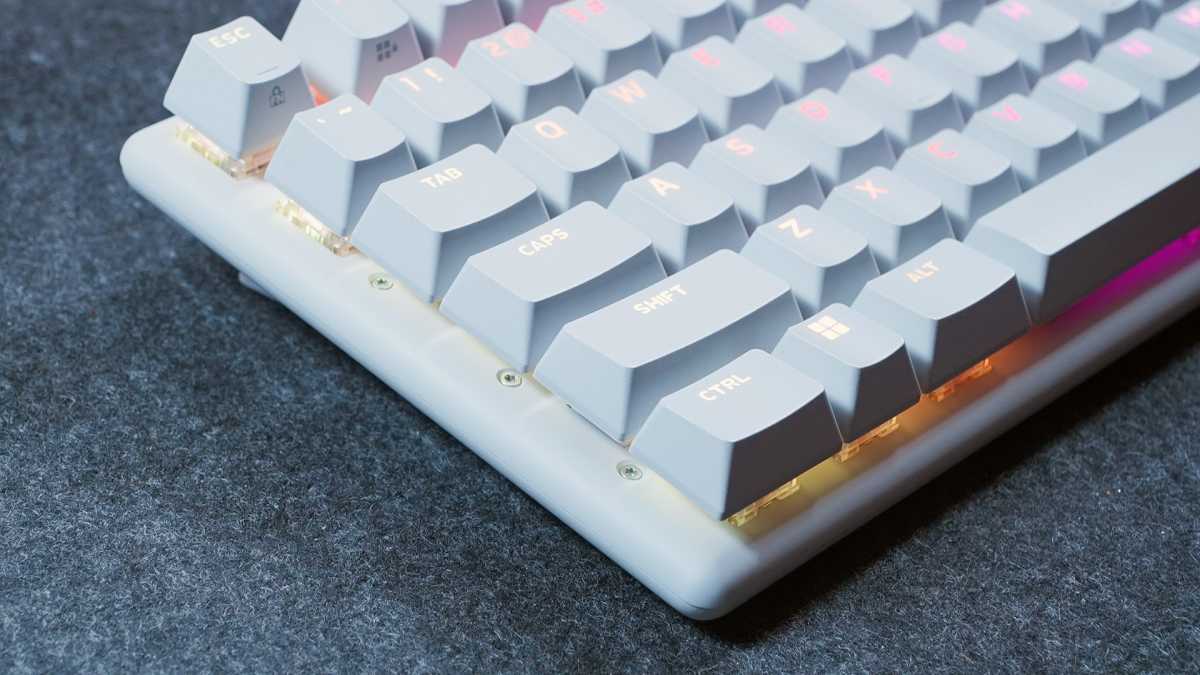
Michael Crider/Foundry
The Pro Wireless Keyboard, along with the Pro Wireless Mouse, seems like Alienware’s attempt to take its peripherals to a new level. Allegedly designed with input from over 100 pro gamers with the long-running Team Liquid name-dropped, this board is aimed squarely at the pros…with the usual appeal to general consumers tagging along for the ride. On top of that, a few nice touches from the custom keyboard world help round out the design.
And the design is literally rounded. The switches of the keyboard pop right out of an aluminum deck that softly curves down to a plastic lower body, pleasantly contrasting with the more angular and aggressive lines of most mechanical keyboards. This floating switch setup, along with eschewing the trend of a dedicated volume knob, makes the board feel seriously compact. In terms of pure dimensions it’s not actually that much smaller than other 75% boards like the BlackWidow V4 Pro, but the rounded body makes it feel smaller in the hand, as if it’s ready and eager to come along in your bag.
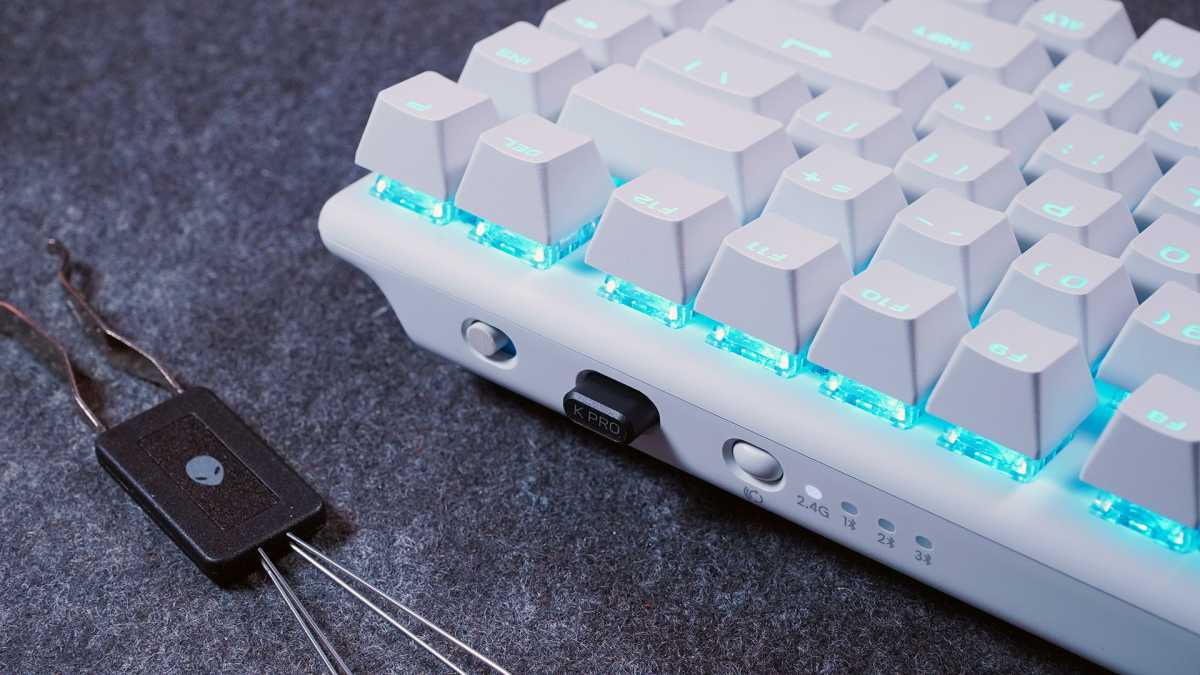
Michael Crider/Foundry
Other choices lend a similar feel. The Wireless Pro comes with a USB Type C dongle, still a rarity even among high-end accessories, indicating that Alienware wants you to use this with the latest laptops and desktops. The dongle disappears into a spring-loaded cubby hole in the body, a very nice touch. The wireless setup offers quick switching between the 2.4GHz dongle and up to three Bluetooth devices. This makes it a willing companion for tablets and other mobile gadgets, though “true” gamers would be loath to tolerate Bluetooth’s higher wireless latency. It’s a bit on the heavy side at 29 ounces (.82 kilograms), which I’m putting down to that curved aluminum deck and a gigantic internal battery. Alienware claims 72 hours of full-brightness RGB gaming, or nearly 800 hours — more than a month — with the lights off and 2.4GHz mode active.
While we’re talking about portability, take a gander underneath the body. Here you see the curvy theme continued with a relatively huge angled shelf, which I’m guessing is housing the battery, and single-stage feet that fold out at an angle for better stability. There’s a long silicone strip that runs almost the entire width of the keyboard at the base, which I was told is there to keep the thing from sliding around. That does help, I suppose…though a little testing doesn’t show it as noticeably better than smaller pads. It seems that in keyboards, as in life, it’s not wise to correlate big feet with better performance.
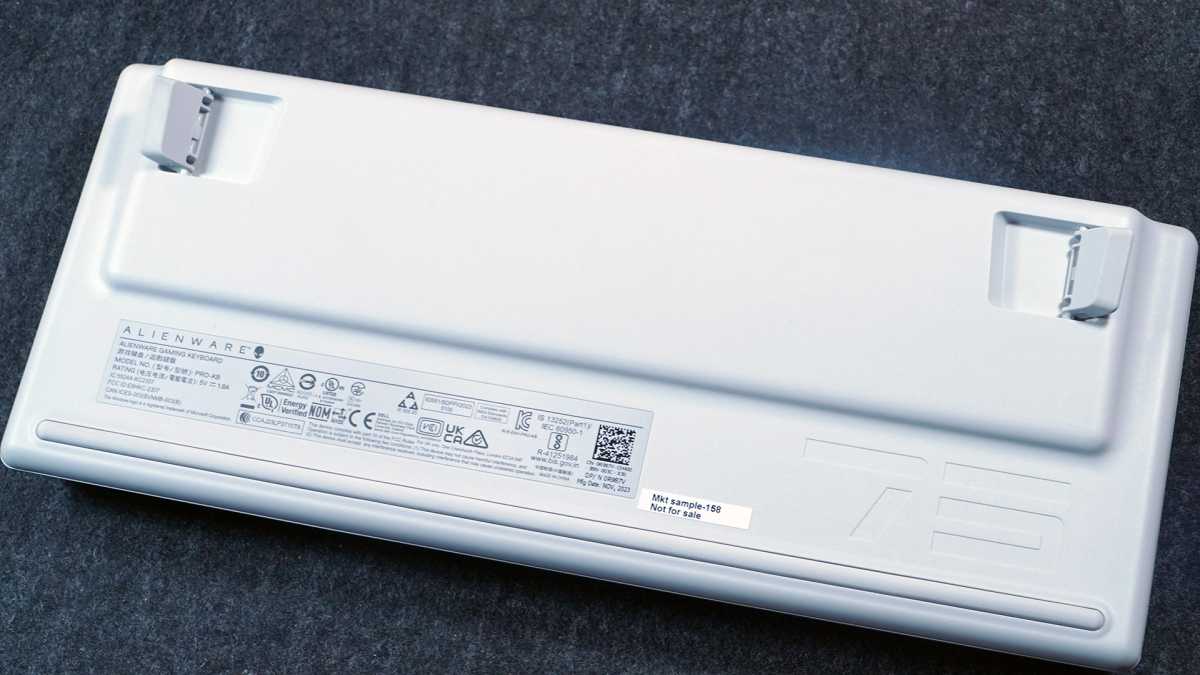
Michael Crider/Foundry
Other features of the board are borrowed from the semi-custom designs that have become so popular, within the gaming space and without. The Pro Wireless comes with some excellent switches pre-installed (more on them later), but you can swap them out to any MX-standard design if you wish. And though the body isn’t meant to be taken apart and customized as indicated by a huge amount of imposing Torx screws, inside are dual layers of vibration-absorbing foam. Alienware also offers the board in white or black to match your battlestation aesthetic, though I think the white really shows off its extra-bright RGB LEDs to the best effect.
Speaking of aesthetics: note that this board has a non-standard configuration on the bottom row of keycaps, with different sizes for the Ctrl, Win, and Alt keys on the left. That’ll make finding a replacement set of keycaps even more tricky than with a “standard” 75% board — you’ll also have to account for the shortened Shift key and 1x modifiers on the right side.
How is the Alienware Pro Wireless for typing and gaming?
Typing on the Pro Wireless feels good. Shockingly good, in fact, considering the brief experiences I’ve had with previous Alienware-branded designs. The keyboard is offered with only Red switches, supplied by Alienware and pre-lubed from the factory. I’m certain that Dell is sourcing them from another company like Kailh or Gateron, but their transparent plastic bodies (complete with an added lens to enhance the keyboard’s LEDs) are unbranded.
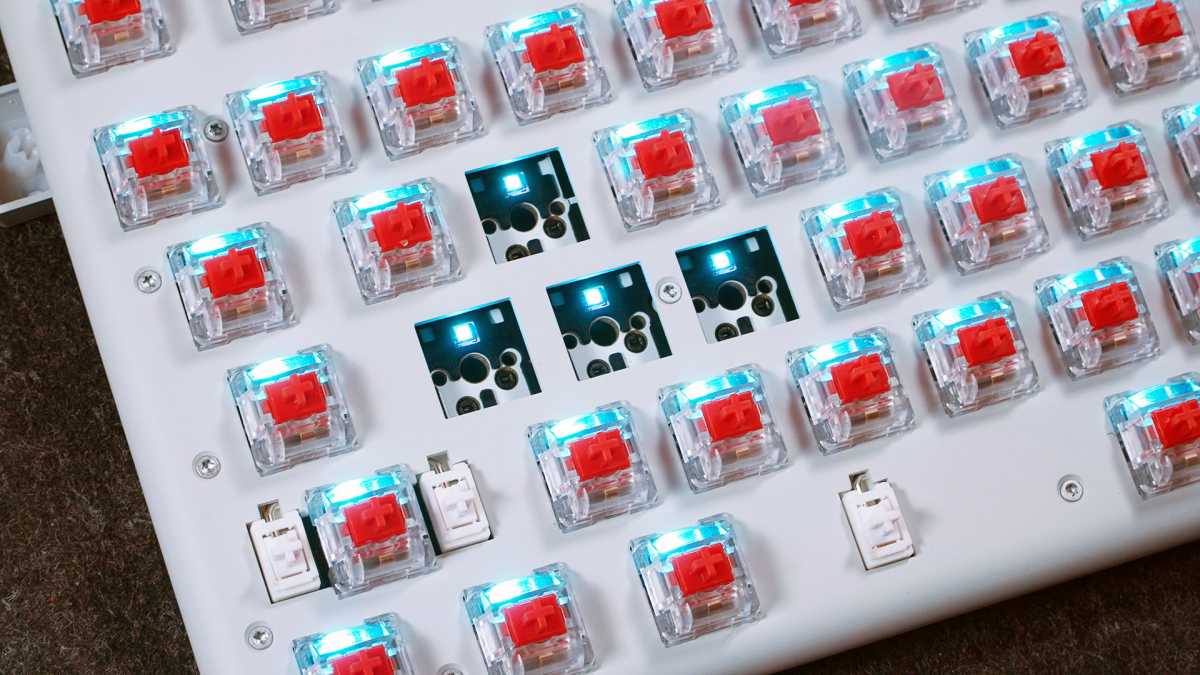
Michael Crider/Foundry
Wherever they come from, the “Alienware linear” reds are excellent. They’re not the best switches I’ve ever used, but they’re well above the standard for gaming boards, offering super-light and smooth operation. Integrating the body and the keyboard deck makes for zero flex in the switches, which feels pretty good to me, though you might think it’s a little stiff if you’re used to a plastic tray or gasket mount. Combined with the solid, foam-filled body, PBT keycaps, and above-average stabilizers on the long keys, extended sessions of writing on the Pro Wireless are pleasant and comfortable.
Ditto for gaming sessions. In long plays through Cyberpunk 2077 and Far Cry 5 I found that the fast and responsive setup was especially good for first-person games. Here’s where the solid stabilizers on the space bar and left-side Shift key made a big difference versus other gaming boards. The super-long battery life was also appreciated, as I prefer to game untethered, and I don’t have the super-human perception necessary to detect a difference between playing with the cable and the 2.4GHz dongle. If, in fact, there is a difference at all.
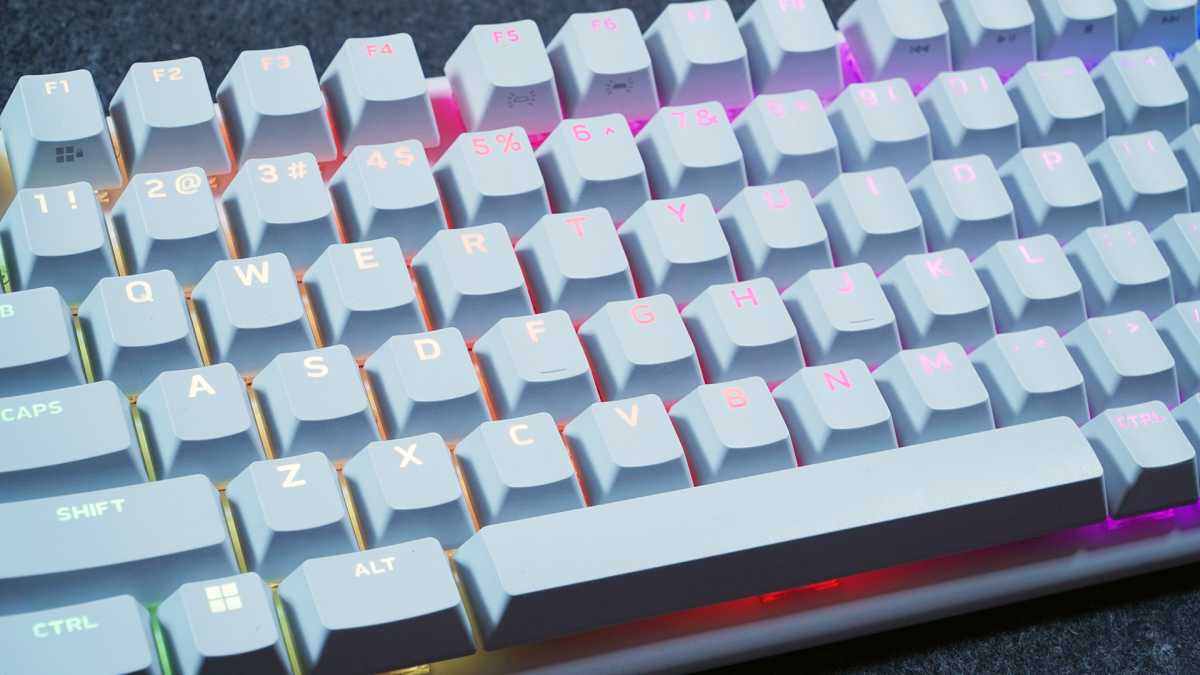
Michael Crider/Foundry
Despite Alienware’s claim that this board is for pro gamers first and foremost, it walks an impressive tightrope between being good for play and practical for work, something I always appreciate in a keyboard. I appreciate its lack of a wrist rest somewhat less, especially at this price — I had to supply my own pretty quickly to remain comfortable.
How is the software?
If the Pro Wireless is Alienware’s attempt to bring itself up to more specialized competition like Razer, Corsair, and Cooler Master, then its software is showing just how hard that can be. None of the software driver packages for gaming accessories are particularly great, with a few like Asus Armoury Crate being downright dreadful. Alienware’s “Command Center” isn’t quite that bad, but it’s definitely on the lower end of the spectrum.
First of all, it constantly demands that I install the Dolby Access app from the Microsoft Store, presumably because it includes integration with Alienware headsets. As I don’t have an Alienware headset, I declined…and declined again, every time I rebooted my computer and the Alienware software popped back up. It also has a nasty habit of losing connection to the keyboard with the 2.4GHz dongle plugged in, even while I continued to type on it. But that doesn’t seem to matter too much, since you have to plug in the keyboard to actually make any changes…something that’s not communicated to the user at all in the interface, and wasted even more of my time.
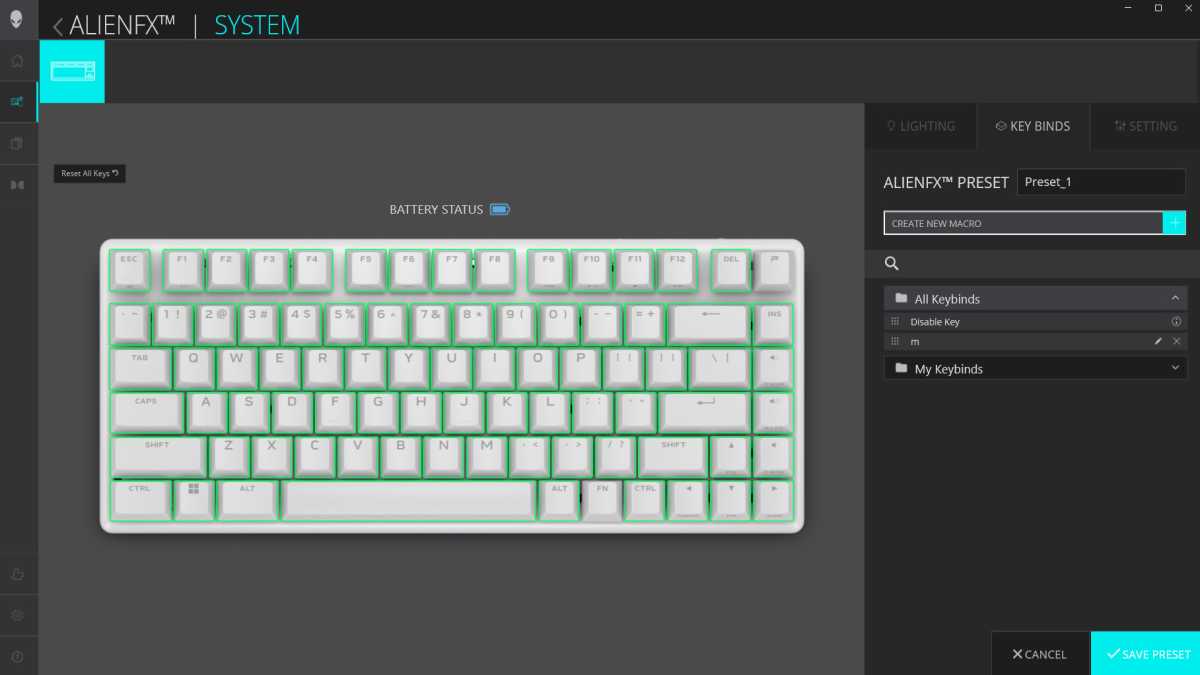
Michael Crider/Foundry
As far as actually managing the board, it could be worse. You have the usual basics of macro and per-key programming, lighting options (about a dozen pre-programmed effects, no integration with other systems), and options to disable Windows and alt-tab in game mode. You can assign specific programs to launch with specific games (assuming the software hasn’t lost track of the board at that point) and save profiles to the keyboard’s internal memory.
It works. Most of the time. But this is definitely the low point of the Pro Wireless experience, and something Alienware needs to improve dramatically if it wants to contend with other players in the industry at their prices. Speaking of which…
Is the Alienware Pro Wireless Keyboard worth it?
Dell wants 200 American greenbacks for the Alienware Pro Wireless Keyboard. That seems overly ambitious to me. Consider that it’s more expensive than Razer’s BlackWidow V4 75%, our number one pick in the gaming category. That design comes with a more mod-friendly build, subjectively better switches, and a cushy wrist rest, with a lack of wireless being the only big disadvantage. The Alienware is only $10 less than the Keychron Q1 Max, which also has dual-mode wireless and comes with a big, beefy metal body and a volume knob.

Michael Crider/Foundry
As good as the Pro Wireless is, and its software deficiencies notwithstanding, I’d like to see it priced $30 to $50 cheaper before I give it an unreserved recommendation. Admittedly, that might be because I know Dell’s access to absolutely massive economies of scale means that it’s more than capable of offering this design at a lower price. But I write as a tech nerd, a gamer, and most importantly a consumer. This keyboard needs to offer a little something more — or to ask for a little something less — before it can join the ranks of the best on the market.
As good as the Pro Wireless is, and its software deficiencies notwithstanding, I’d like to see it priced $30-50 cheaper before I give it an unreserved recommendation.
The Pro Wireless is a good keyboard, with solid typing and gaming performance and long battery life. The curvy white model might appeal specifically to gamers who want a unique look. But its value proposition and software jankiness keep it from achieving greatness. If you can find it on sale, or if Dell decides to re-evaluate its rather high price tag, it might be worth a faster buy.



